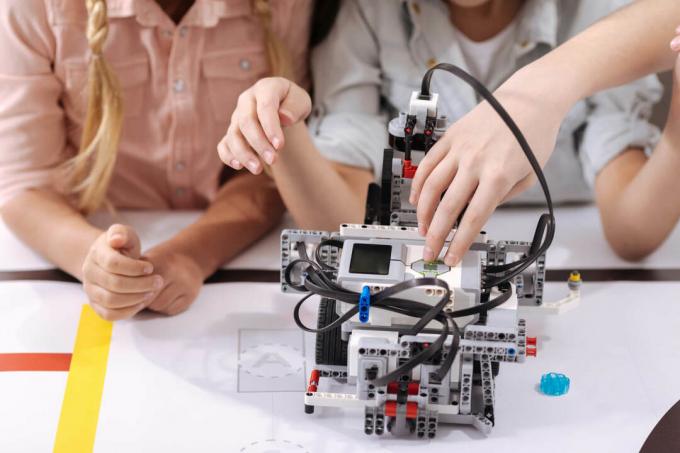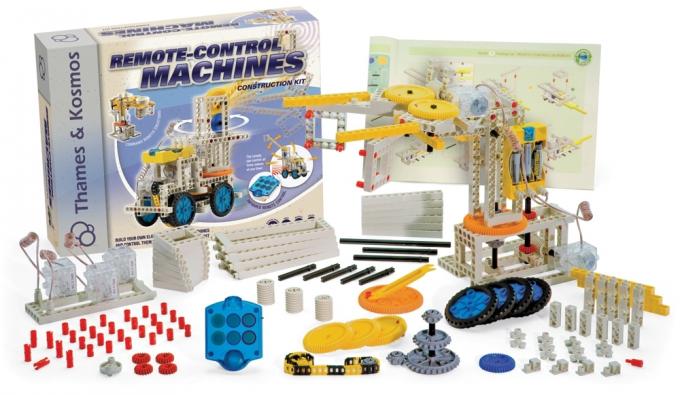A Educational Robotics, also called Pedagogical Robotics, fits into the technological innovations that are being used in education. Whether for elementary or high school students, this practice is aligned with the development of skills that are in great demand among future professionals.
Since the job market these students are being prepared for is no longer the same, teaching needs to keep up with the new demands, empowering students, including from education basic.
see more
Youth and Adult Education (EJA) is once again a federal priority
Teacher performance is a key factor for the full inclusion of students…
In addition, Educational Robotics activities provide a series of benefits that go far beyond theoretical-practical knowledge. During classes, students work on important concepts, such as the importance of teamwork, imagination, creativity, patience, perseverance and many others.
A Educational Robotics is a teaching methodology whose objective is to instigate the student to build their own knowledge from the realization of a concrete action. That is, it provides

This stimulus to practical actions makes students develop the ability to solve proposed problems, which ranges from meeting the new skills demanded by the labor market, which is increasingly recruiting people with high potential creative.
A curricular or extracurricular component of many public and private schools throughout Brazil, Robotics classes are carried out by working with the kits elaborated by companies in the area, or by scrap materials, which, together with motors and sensors controllable by software, make it possible to assemble robots with countless functions.
The professors of the discipline start from knowledge previously applied to the students, and from that they will create the problem situations, always stimulating reflection and establishing a link with what was taught and the daily lives of students. So the main focus is learning by doing.
Despite being on the rise a few years ago, anyone who thinks this is a new idea is wrong. In the mid-1960s, the American mathematician, Seymour Papert, inspired by the constructivism of Jean Piaget, suggested that computers be used as a tool to enhance the learning process of children.
Without being taken too seriously, since at that time personal computers were far from being a reality for the majority of the population, he spent years developing the theory of constructionism while a professor at the Massachusetts Institute of Technology (MIT), in the United States. United.
It was through this study that, in 1980, he presented the ground turtle, which was nothing more than a robot that used programming, also created by him, in Logo language. Very accessible to children, through the computer they were able to draw various geometric figures.
Although very similar to Piaget's constructivism, Papert's constructionism excels in carrying out a concrete action, which results in something tangible. It is precisely this vision that, in recent years, has influenced thousands of schools around the world.
One of the main goals of Educational Robotics, as already mentioned, is the stimulus for students to see in practice what they learn during classes. But does not stop there. She is able to place the student at the center of her learning, making memorized subjects a thing of the past.
Another key point is the planning and the execution of projects. This means that, in addition to discipline, students learn to work as a team, knowing that different ideas can complement each other and guide solutions never thought of before.
Far beyond the concepts of physics and mathematics, the classes allow the development of mental skills It's from logical reasoning, improves motor coordination, awakens curiosity and makes students overcome their own limitations.
However, for learning to be efficient and make sense, school managers need to understand it in its context. totality and not just as a mere inclusion of technology in the classroom, under the risk of not achieving the results expected.
Professors in the area also need to be in constant training, not only with regard to news in Robotics, but also with regard to didactics and everything capable of enriching the experience of activities in the classroom of class.
To work on the theoretical part of Robotics Education, teachers make use of kits that make it possible to assemble robots and program them to perform actions.

These typically include software, hardware, and documentation. As far as software is concerned, two programming languages are the most common in kits. One of them is the textual programming language, which can be developed for the kit itself, but based on programming in Java, for example.
Another option is the graphical programming language, in which programs are built by students through their interaction with visual elements, almost always through actions with the mouse.
Regarding the hardware, basically it is composed of three basic structures:
Finally, the documentation comprises, in addition to the technical documents themselves, the user manual and the pedagogical support material.
Among the Educational Robotics kits that stand out are Arduino, Modelix Robotics and Lego.
Despite being a practice started in Brazil in 1978, from 2002, with the support of the federal government, Science Olympiads have gained a crucial place in annual planning in schools across the world. country.
The Ministry of Education (MEC) in partnership with the National Foundation for Development of Education (FNDE), the Ministry of Science and Technology (MCT) and the National Council for Scientific and Technological (CNPq).
The Brazilian Robotics Olympiad (OBR) is one of them, which according to its announcement, aims to “act as an instrument for the improvement of primary and secondary education, as well as identifying talented young people who can be stimulated into careers technical-scientific”.
It has been held annually since 2007, each year with the national stage held in a different state. Over time it underwent important changes in its structure, but without this affecting the exponential growth in the number of subscribers.
In its first edition, approximately 6,500 subscribers were registered. Ten years later, in 2017, there were more than 142,000 applicants, both for the practical modality, carried out in teams, and for the theoretical modality, with individual tests.
Other information about the structure of the Olympics, organization, how to participate, modalities, calendar and other topics can be found on the website www.obr.org.br.